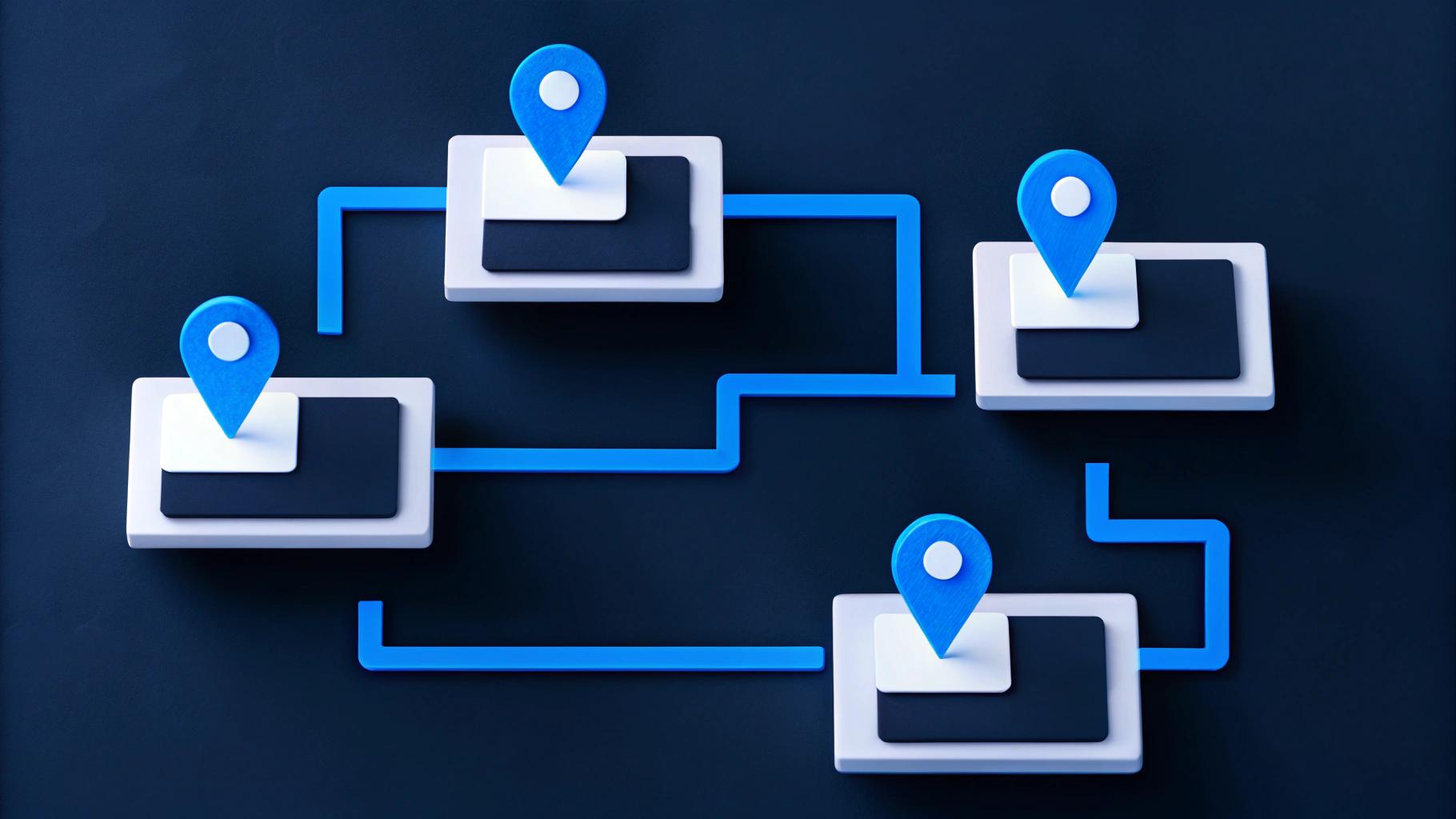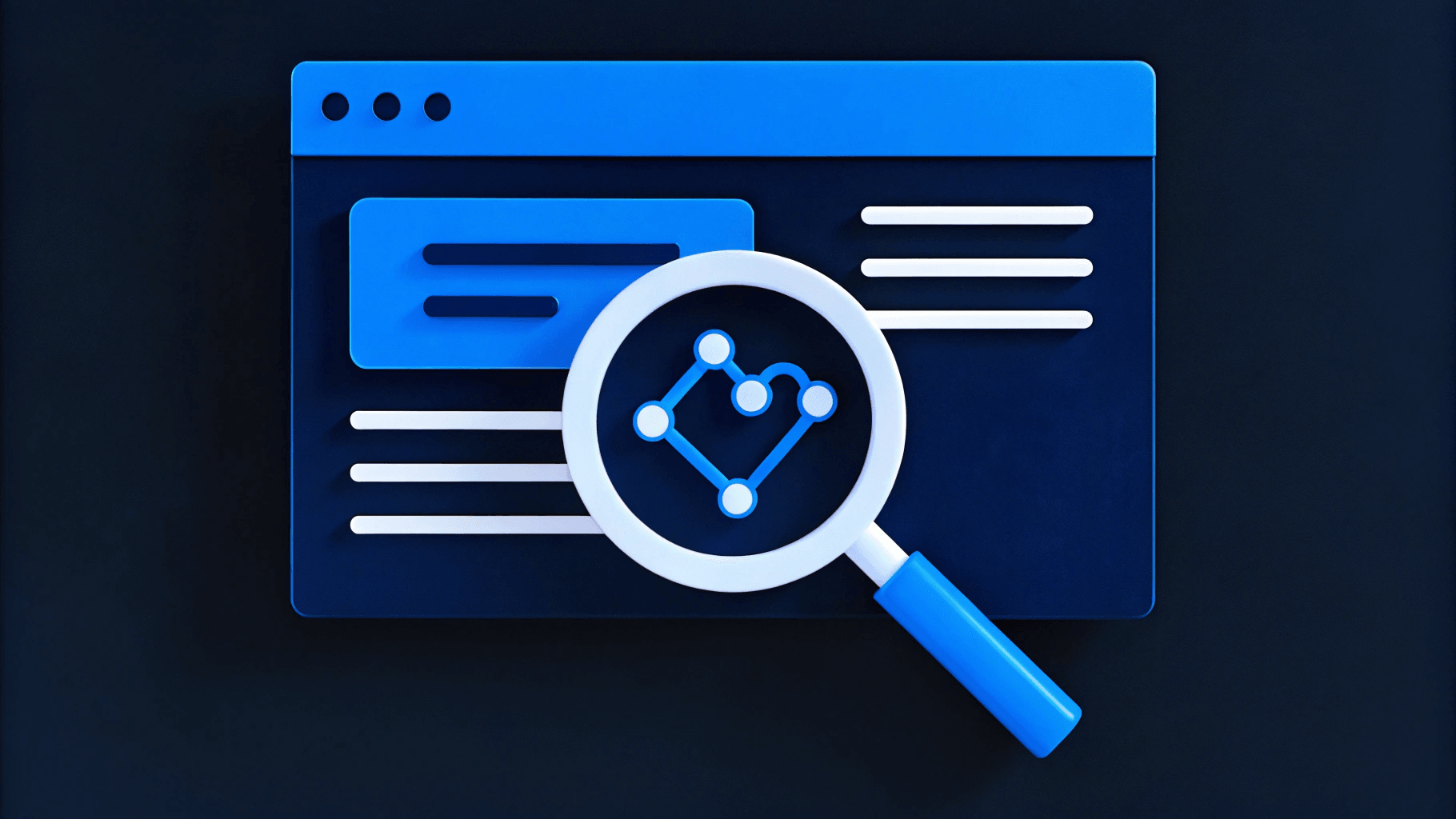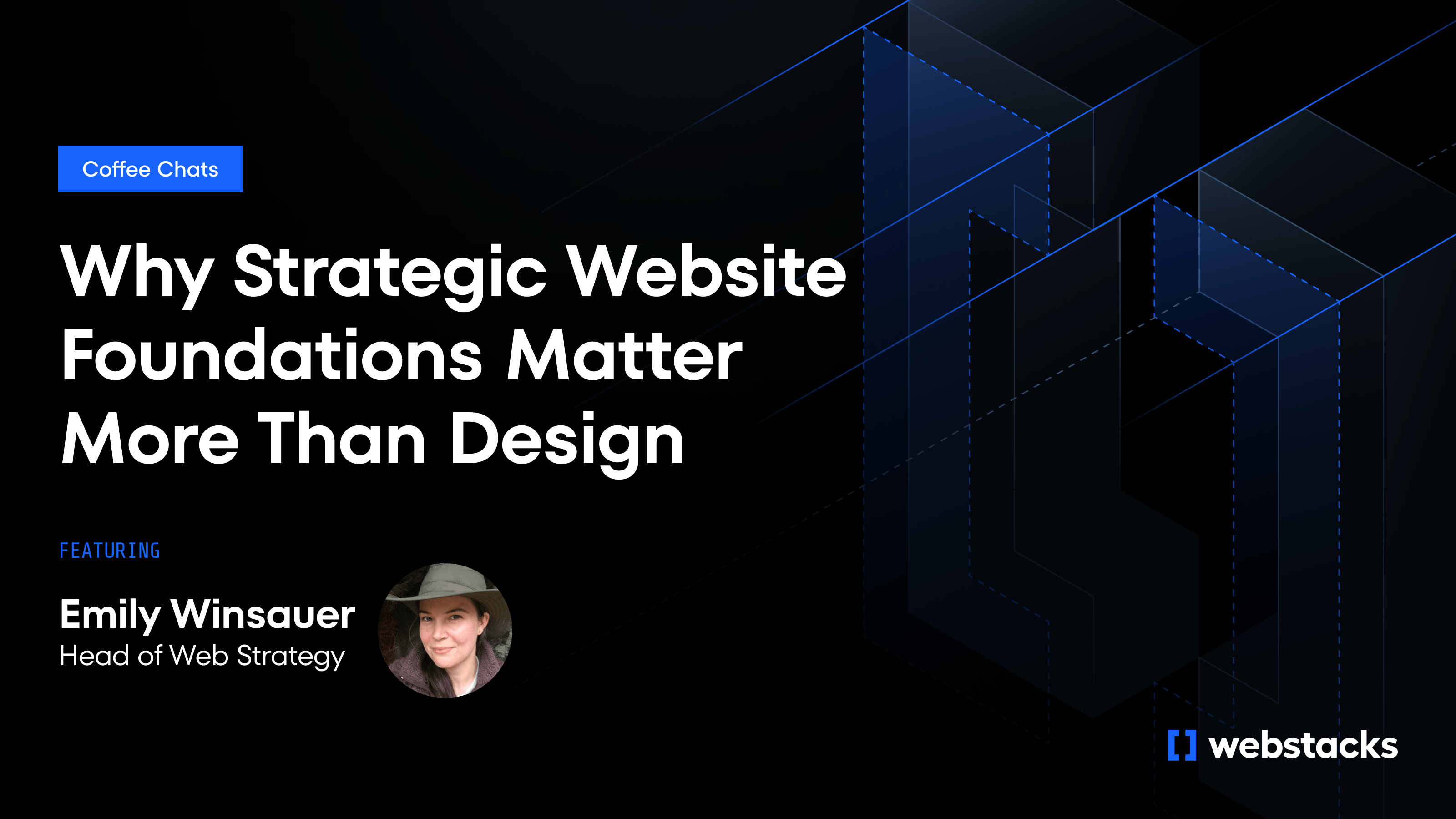Healthcare marketing is getting more complex. Teams are managing more audiences, more channels, and more campaigns. Often with outdated tools that can’t keep up. Manual processes slow things down, and legacy systems make it hard to scale.
Healthcare marketing automation solves that by personalizing outreach and reducing busywork while still meeting compliance standards. It helps teams move faster and get better results from their campaigns.
Webstacks works with MedTech and healthcare organizations to modernize their digital platforms—from replacing rigid CMS setups to building automation-ready systems that support growth and governance. And we’ve seen first-hand the direct benefits of automation on marketing teams.
In this article, we’ll break down how marketing automation works in healthcare, where it adds the most value, and how to set your team up with the right tools and workflows to scale efficiently.

What Is Healthcare Marketing Automation?
Healthcare marketing automation uses software platforms to streamline and measure marketing tasks and workflows. These platforms help teams execute complex strategies across email, web, SMS, and social channels without building every touchpoint from scratch.
In practical terms, this could look like:
- Automatically sending appointment reminders.
- Triggering follow-up emails after someone downloads educational content.
- Segmenting contacts into nurture campaigns based on engagement history.
While the mechanics are similar to B2B SaaS marketing automation, healthcare teams must navigate added layers of sensitivity, including HIPAA compliance, internal governance, and multi-stakeholder messaging. That's why choosing the right tools and implementing them correctly is so important.
Why Marketing Automation Matters to Growth-Stage Healthcare Teams
Automation is more than a time-saver for marketing and digital leaders in growth-stage MedTech or healthcare companies. It's a way to:
- Eliminate bottlenecks and reduce dependence on dev teams for campaign execution.
- Launch, test, and iterate on patient and provider journeys faster.
- Maintain rigorous data security while executing outreach at scale.
- Tailor messages by audience type or lifecycle stage.
6 Use Cases of Healthcare Marketing Automation
Healthcare organizations need to move beyond surface-level features and focus on strategic implementation to get real value from marketing automation. Look at use cases that drive measurable outcomes, such as improving patient engagement, increasing provider satisfaction, and accelerating revenue growth.
Below are six high-impact ways healthcare marketing automation can transform how your team works and performs.
1. Patient Segmentation and Personalization
Different audiences need different messages. Automation platforms allow teams to segment patient populations by demographics or behaviors and then personalize communications based on those criteria.
For example, an educational campaign on diabetes can be sent to patients who’ve opted into health content related to chronic conditions. Post-op follow-up emails can be tailored to reflect the type of procedure and recovery timeline, based on structured, HIPAA-compliant data from a CRM or patient engagement platform.
This level of personalization builds trust without requiring your team to configure every send manually.
2. Automated Appointment Reminders and Follow-Ups
Missed appointments and delayed follow-ups create friction for both patients and care providers. Automation can fix that by sending personalized reminders across email or SMS based on EHR or CRM data.
After the visit, patients can receive automated follow-up instructions, satisfaction surveys, or prompts to schedule future care, all configured based on condition, provider, or visit type.
3. Lead Nurturing for Providers, Partners, and Patients
Whether you’re marketing to referring physicians, onboarding partners, or engaging prospective patients, automation helps move each audience through the funnel more effectively.
You can build email sequences that educate over time, highlight relevant services, or reinforce clinical credibility.
For B2B outreach (like MedTech sales or provider partnerships) automation can score leads based on known interactions and flag them for follow-up, helping sales teams focus where it counts.
Any behavioral tracking or personalization tied to healthcare content should be handled in platforms that are HIPAA-compliant and based on consented data.
4. Re-Engaging Dormant or At-Risk Audiences
Engagement doesn’t stop after a single visit or interaction. Many healthcare organizations have inactive patient lists or unresponsive leads who may still benefit from follow-up.
With marketing automation, you can build re-engagement campaigns using HIPAA-compliant CRM or patient communication tools.
These systems can help identify users who haven’t interacted in a while based on secure, consented data and send targeted messages like wellness check-ins, educational resources, or reminders to schedule follow-ups.
5. Managing Multichannel Campaigns at Scale
Healthcare audiences don’t stick to one channel. A provider might see your content on LinkedIn, open an email the next day, and respond to a text reminder later that week.
Automation helps you manage this complexity without bouncing between disconnected tools.
With the right platform, you can coordinate a full campaign: promote a continuing education webinar to providers via email, send a follow-up SMS to confirmed registrants, and run retargeting ads on LinkedIn for those who clicked but didn’t sign up.
The messaging stays consistent, the campaign stays compliant, and your team doesn’t lose time jumping between systems.
This kind of orchestration is especially useful for MedTech marketers running regional rollouts, payer engagement campaigns, or cross-functional product launches where timing and message alignment matter.
6. Connecting Marketing Automation to Website Design
Your website is the foundation of your marketing automation strategy. Every landing page, form, CTA, and content block plays a role in how you capture data and trigger workflows.
For automation to work, the site needs to be built for it. It needs structured content, flexible CMS integrations, and clean user flows that support everything from gated downloads to appointment scheduling.
If your form data can’t sync with your CRM or your CMS can’t support dynamic content, automation hits a wall.
At Webstacks, we build and design websites for healthcare and MedTech companies that are ready for automation from day one. That includes component-based architecture, HIPAA-compliant integrations, and marketing systems that connect directly to CRMs and CDPs.

5 Steps to Implement Marketing Automation in Your Healthcare Business
While the benefits of marketing automation are clear, the real challenge lies in execution.
Many healthcare teams struggle with outdated tech stacks, siloed data, or a lack of internal alignment. Implementing automation requires a plan and the right tools.
1. Assess Your Current Systems and Set Clear Goals
Before jumping into platform comparisons, evaluate your current marketing ecosystem. Ask:
- What manual tasks are slowing us down?
- Where are we missing opportunities to engage patients or partners?
- Which channels and campaigns are driving results, and which aren't?
Then, define success. Are you trying to reduce appointment no-shows, increase lead conversion, or build scalable outreach across departments? A clear vision will guide every downstream decision.
2. Choose the Right Tools for Healthcare
Not all automation platforms are built with healthcare in mind. Look for solutions that offer:
- HIPAA-compliant infrastructure and data handling.
- Native integrations with the systems you use.
- Advanced segmentation and multichannel capabilities.
- Built-in reporting that ties marketing activities to business outcomes.
Popular options include Salesforce Health Cloud and ActiveCampaign for Healthcare.
3. Align Automation with Your CMS and Website Infrastructure
A modular, composable website, like those built by Webstacks, makes it easier to integrate automation tools. This matters most for healthcare and MedTech companies managing multiple regions or audience types.
Automation only works when your CMS can support dynamic content, structured data, and integration with CRMs and email platforms.
By moving to a headless CMS and modular design system, they gained the flexibility to roll out localized content, optimize for search, and support marketing operations.
4. Train Your Team and Build Internal Champions
Adopting automation demands a shift in how teams think about marketing. Provide hands-on training for your team and identify internal champions who can lead adoption and troubleshoot challenges.
5. Launch, Test, and Optimize
Start small: Build one automated campaign that addresses a clear pain point, like a re-engagement workflow or onboarding series. Then, expand.
Monitor key metrics like open rates, click-throughs, conversions, and unsubscribes. Use that data to refine your messaging, segmentation, and triggers.
Make Automation Your Growth Engine
Healthcare marketing automation is necessary for teams to scale and personalize outreach. From patient reminders and lead nurturing to re-engagement campaigns and multi-channel coordination, automation helps healthcare and MedTech organizations do more with less.
But the magic happens when automation is built on the proper digital foundation.
A flexible CMS, scalable design systems, and modular web infrastructure give marketing teams the control and agility to launch, test, and optimize.
At Webstacks, we help healthcare marketing teams build platforms that evolve with their business. Whether you're migrating from a legacy CMS or implementing new marketing automation tools, we'll help you get there quickly.
Let's talk about how your team can implement automation that delivers real results without compromising compliance or control.




